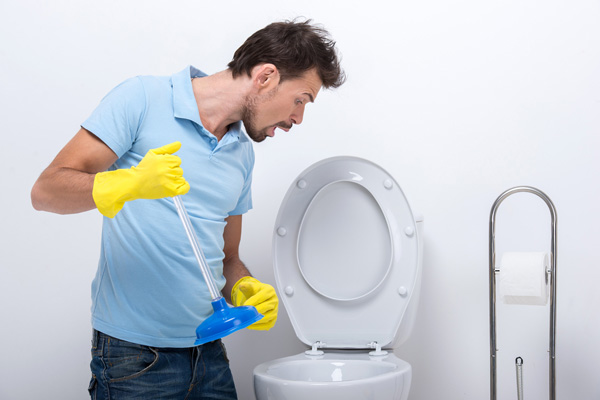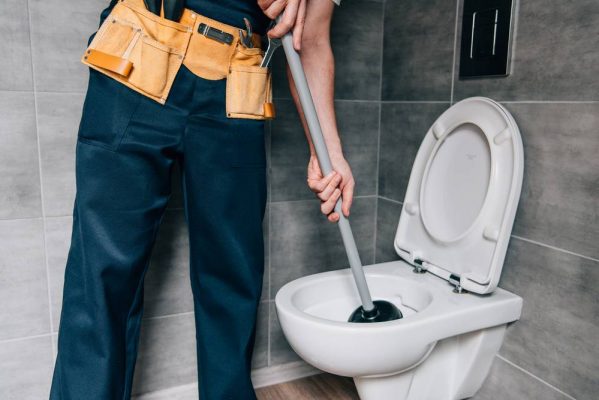Tips to Properly Apply Plunger and Drain Cleaner: Specialist Guidance
Tips to Properly Apply Plunger and Drain Cleaner: Specialist Guidance
Blog Article
The author is making a few good annotation regarding How To Use Your Toilet Plunger Correctly in 5 Easy Steps in general in this post in the next paragraphs.

Introduction
Proper maintenance of family drains is necessary for preventing clogs and making certain smooth water flow. One of the key tools in every house owner's toolkit is the bettor, alongside numerous drain cleansers developed to deal with stubborn obstructions successfully. This post discovers just how to use bettors and drainpipe cleansers properly to keep your drains flowing freely.
Section 1: Comprehending Bettors
Types of Plungers
There are a number of sorts of bettors available, each designed for different types of drains pipes and obstructs. One of the most typical types consist of mug plungers, flange bettors, and accordion bettors.
Exactly How Plungers Job
Bettors work with the principle of creating stress and suction to dislodge blockages. When appropriately applied over a drain, they develop a vacuum that can take out particles or separate obstructions.
Picking the Right Bettor
Picking the right plunger depends on the kind of drainpipe and the nature of the obstruction. Cup plungers are excellent for sinks and bathtubs, while flange plungers are better matched for toilets as a result of their design.
Usual Blunders with Plungers
Avoiding these mistakes makes certain effective plunging: incorrect seal around the drain, not enough pressure, and not clearing bordering particles.
Section 2: Using Plungers Effectively
Prep work
Before plunging, make certain the bettor covers the drain entirely and develops a tight seal. Clear any visible debris around the drainpipe opening.
Technique
Start with mild diving movements to build suction. Increase stress progressively, utilizing a consistent rhythm. Repeat as needed till the drain removes.
Troubleshooting Tips
If diving does not work, attempt changing the seal, using oil jelly for a better seal, or using a different kind of plunger.
Area 3: Understanding Drain Cleaners
Types of Drainpipe Cleansers
Drain cleaners can be chemical or chemical. Chemical cleaners use solid chemicals to dissolve clogs, while chemical cleansers utilize all-natural enzymes to break down raw material.
Exactly How Drain Cleaners Job
Chemical cleansers respond with obstructions to dissolve them, while chemical cleaners break down natural products like hair and grease without harming pipelines.
Safety Considerations
Always use gloves and eye security when using chemical drainpipe cleaners. Make certain ample ventilation and follow producer instructions thoroughly.
Eco-Friendly Alternatives
Think about using vinegar and baking soft drink or enzyme-based cleaners for environment-friendly options that are much safer for pipelines and the setting.
Area 4: Making Use Of Drainpipe Cleansers Efficiently
Application Methods
Pour chemical cleaners straight into the drainpipe opening. Allow them to work for the suggested time before purging with hot water. Enzymatic cleansers must sit overnight.
Preventative measures
Stay clear of mixing various kinds of cleaners, as this can create hazardous fumes. Never ever make use of chemical cleansers combined with a bettor, as spilling can happen.
Dealing With Persistent Clogs
For relentless obstructions, take into consideration using a plumbing serpent or calling an expert plumbing professional to avoid damage to pipelines.
Conclusion
In conclusion, comprehending exactly how to use plungers and drainpipe cleaners effectively is crucial for maintaining healthy and balanced pipes systems. By selecting the right devices and methods, homeowners can take on minor clogs and protect against major pipes problems down the line.
How To Properly Use A Plumbing Snake To Clear Drains
When any drain clogs in our home arise, we tend to gravitate toward the plunger and little else. In cases where the plunger and its vacuum-created pressure are not able to clear clogs, many immediately move to harmful chemicals or simply call their plumber to fix the issue.
we’re happy to help with all drain cleaning needs and concerns. This includes informing you on a few other home remedies you may have at your disposal for minor to moderate clogs, one of which is the use of a plumbing snake. Many people have never used one of these before – let’s go over the steps to take when your drain clogs and you have a plumbing snake available.
Attempt Plunger Use
The first step here, as we noted above, should indeed be to grab your plunger when you notice a drain clog and attempt to resolve it this way. If you’re unsure how to use a particular type of plunger, our plumbers can answer any questions you have. If this doesn’t do the trick, however, you move on to the snake.
Locate And Prepare Snake
A plumbing snake is a metal or plastic device that’s generally about a quarter of an inch thick. It’s design with significant extensions, meant to reach down into your clogged drain and push the clog out. Snakes also contain drain augers that will latch onto and push stubborn blockages.
If your plunger doesn’t clear a clog, locate your snake and bring it to the drain in question. We also recommend keeping a bucket nearby to collect the clog once you pull it out, plus we’d advise wearing goggles and possibly protective gloves.
Feed Snake
Once you’re ready to go, feed the snake slowly down the drain, using the crank device it comes with to keep it moving until it finds the clog. Once this happens, much of the clog will be latched onto the coil so you can pull it out, while the rest will simply break up and flow downward.
Detach Debris
Remove the snake slowly from the drain, and once you’ve done so, pick off any debris that’s stuck to the coil. This is another area where wearing gloves is a must.
Flush Drain
Finally, take a few minutes to ensure the snake has done its job correctly. If you’ve been using it on a toilet, flush the toilet a couple times and make sure everything flows well. If you’ve used it on a different drain, flush it with some room temperature water.
https://www.mybuddytheplumber.com/blog/how-to-properly-use-a-plumbing-snake-to-clear-drains/

Application Methods
Pour chemical cleaners straight into the drainpipe opening. Allow them to work for the suggested time before purging with hot water. Enzymatic cleansers must sit overnight.
Preventative measures
Stay clear of mixing various kinds of cleaners, as this can create hazardous fumes. Never ever make use of chemical cleansers combined with a bettor, as spilling can happen.
Dealing With Persistent Clogs
For relentless obstructions, take into consideration using a plumbing serpent or calling an expert plumbing professional to avoid damage to pipelines.
Conclusion
In conclusion, comprehending exactly how to use plungers and drainpipe cleaners effectively is crucial for maintaining healthy and balanced pipes systems. By selecting the right devices and methods, homeowners can take on minor clogs and protect against major pipes problems down the line.
How To Properly Use A Plumbing Snake To Clear Drains
When any drain clogs in our home arise, we tend to gravitate toward the plunger and little else. In cases where the plunger and its vacuum-created pressure are not able to clear clogs, many immediately move to harmful chemicals or simply call their plumber to fix the issue.
we’re happy to help with all drain cleaning needs and concerns. This includes informing you on a few other home remedies you may have at your disposal for minor to moderate clogs, one of which is the use of a plumbing snake. Many people have never used one of these before – let’s go over the steps to take when your drain clogs and you have a plumbing snake available.
Attempt Plunger Use
The first step here, as we noted above, should indeed be to grab your plunger when you notice a drain clog and attempt to resolve it this way. If you’re unsure how to use a particular type of plunger, our plumbers can answer any questions you have. If this doesn’t do the trick, however, you move on to the snake.
Locate And Prepare Snake
A plumbing snake is a metal or plastic device that’s generally about a quarter of an inch thick. It’s design with significant extensions, meant to reach down into your clogged drain and push the clog out. Snakes also contain drain augers that will latch onto and push stubborn blockages.
If your plunger doesn’t clear a clog, locate your snake and bring it to the drain in question. We also recommend keeping a bucket nearby to collect the clog once you pull it out, plus we’d advise wearing goggles and possibly protective gloves.
Feed Snake
Once you’re ready to go, feed the snake slowly down the drain, using the crank device it comes with to keep it moving until it finds the clog. Once this happens, much of the clog will be latched onto the coil so you can pull it out, while the rest will simply break up and flow downward.
Detach Debris
Remove the snake slowly from the drain, and once you’ve done so, pick off any debris that’s stuck to the coil. This is another area where wearing gloves is a must.
Flush Drain
Finally, take a few minutes to ensure the snake has done its job correctly. If you’ve been using it on a toilet, flush the toilet a couple times and make sure everything flows well. If you’ve used it on a different drain, flush it with some room temperature water.
https://www.mybuddytheplumber.com/blog/how-to-properly-use-a-plumbing-snake-to-clear-drains/

I'm just very intrigued by and I really hope you liked the entire blog post. Sharing is good. You never know, you may be doing someone a favor. Bless you for your time. Kindly pay a visit to our site back soon.
Call Today Report this page